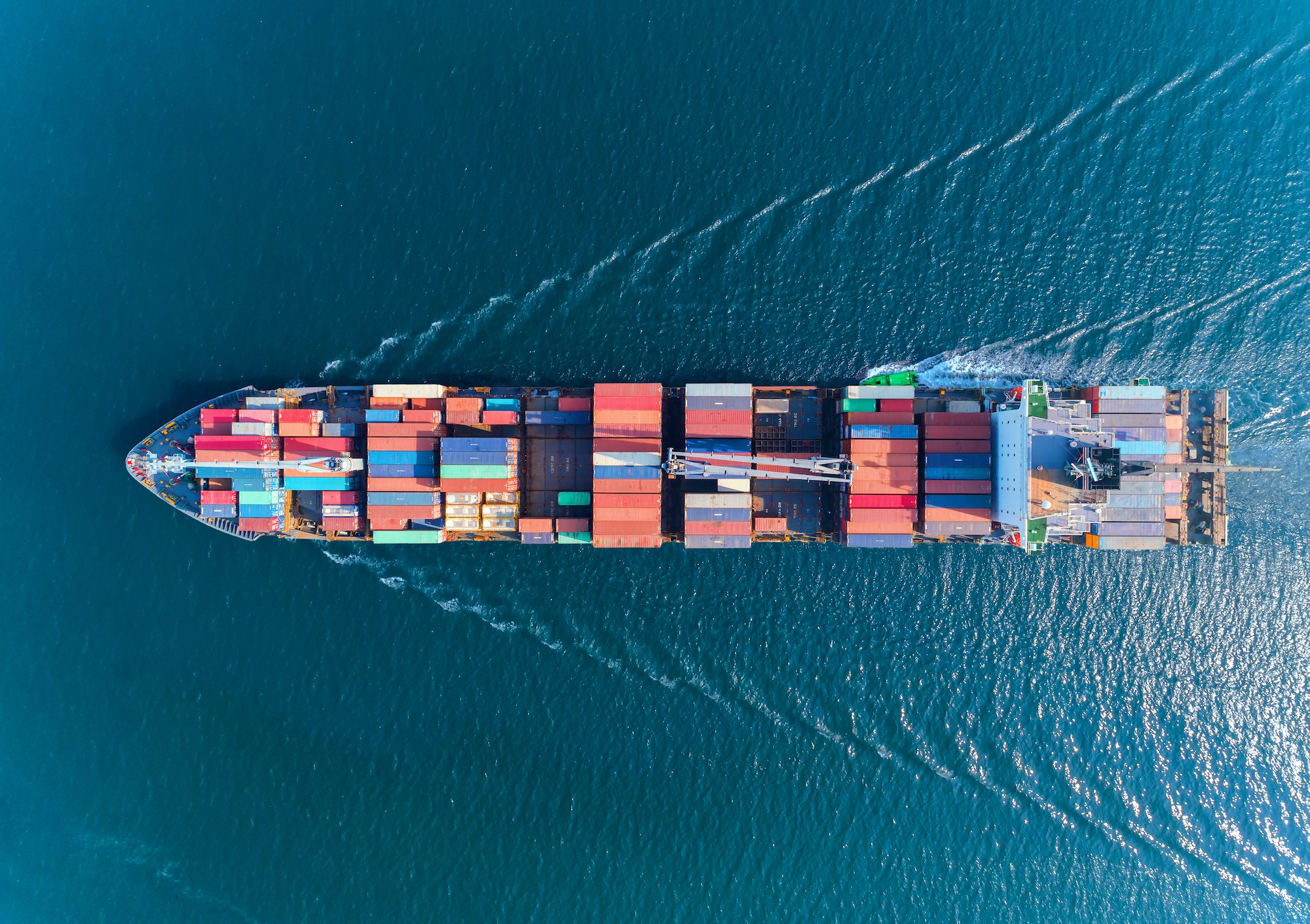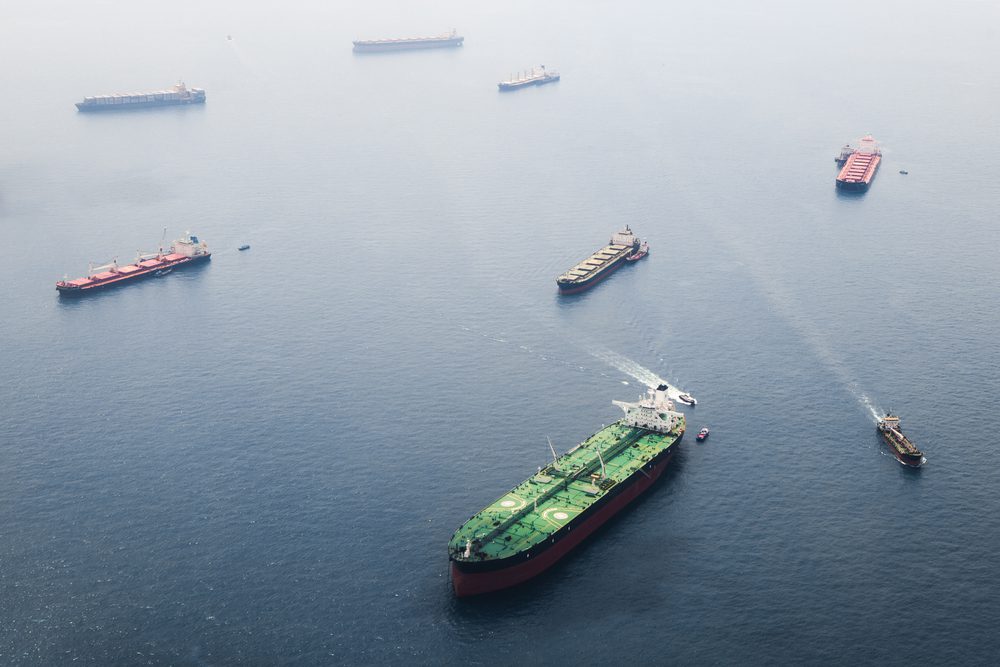by John Konrad (gCaptain) A new report found that more than 75% of ships will not meet the International Maritime Organization’s (IMO) new Environmental social and corporate governance (ESG) index aimed at decarbonizing the industry. This means that many ship owners will be forced to slow ships down to reduce emissions but doing so could deepen the global food and energy crisis by reducing available ship capacity.
“IMO decarbonization targets will cause ships to slow down delaying food shipments and people will starve,” a global security analyst told gCaptain. “How many people will die as a result of the IMO’s ESG efforts is unknown at this time. I don’t think most shipowners even understand the severity of the EEXI threat but it could be millions of lives.”
IMO EEXI ESG INDEX
“Prior to any efficiency modifications, more than 75% of the fleet — including bulkers, tankers, and containerships — will not be compliant with the Energy Efficiency Existing Index (EEXI) that will enter into force next year,” said cargo analyst Joey Daly, in the new VesselsValue report.
The challenge of decarbonization will extend to all areas of shipping, and EEXI alone will present a myriad of challenges to owners, operators and financiers. Simon Hodgkinson, who heads loss prevention at West P&I, has suggested that the new rule could be one of the most significant new shipping regulations in years. He believes it has the potential to shift the entire industry.
The International Maritime Organization’s Energy Efficiency Existing Index is a voluntary, incentive-based system that encourages ships to improve their energy efficiency. The Index uses a vessel’s speed, cargo-carrying capacity, and other factors to calculate a numerical score. The higher the score, the more energy efficient the vessel. More specifically EEXI (Energy Efficiency Existing Ships Index) is a measure of a ship’s CO2 emissions per transport work. It is similar to the Energy Efficiency Design Index (EEDI), which has been in force since 2013, but applies to existing ships rather than new ones.
The Index is designed to motivate shipowners and operators to invest in energy efficiency measures that will reduce fuel consumption and greenhouse gas emissions.
Ships have to attain EEXI approval once in a lifetime, by the first periodical survey in 2023 at the latest.
Slow Steaming
Ship owners can meet the target by building new eco-friendly ships, investing in new decarbonization technology, and upgrading existing ships to burn cleaner fuels like LNG, or by slow steaming.
Slow steaming is a technique used by shippers to reduce fuel consumption and emissions by slowing down vessels. The process involves sailing at a slower speed, typically around 50% of the vessel’s maximum speed. This can be done by reducing the revolutions per minute (RPM) of the propellers.
While older ships can be retrofitted with devices to lower emissions and meet EEXI requirements, analysts say the fix most ship owners will take is just to go slower, with a 10% drop in cruising speeds slashing fuel usage by almost 30%, according to marine sector lender Danish Ship Finance.
“They’re basically being told to either improve the ship or slow down,” said Jan Dieleman, president of Cargill Ocean Transportation, the freight division of commodities trading house Cargill, which leases more than 600 vessels to ferry mainly food and energy products around the world.
This strategy also reduces the amount of wear and tear on the vessel, which can help extend the life of the ship. But there is one ancillary effect: a potentially massive reduction in fleet capacity.
Global Fleet Capacity
For owners of the vast majority of older ships, the slow steaming option is the most cost-effective option to meet EEXI requirements. Many container lines like Maersk started slow steaming in 2013 after that segment of the industry went on a newbuild frenzy which brought too much capacity into the market.
When a large fleet of ships like Maersk’s reduce speed they all spend more time in the ocean and less time loading cargo. This artificially reduces the fleet’s total cargo carrying capacity.
During periods of slow economic growth – like after the 2008 financial collapse – or during periods of major overcapacity – like after large container lines started building mega-sized ships – the artificial reduction in fleet carry capacity due to slow steaming can bolster falling rates. Today, however, we have the opposite problem… too little fleet capacity.
Cargo prices have been soaring over the last two years as the global economy reopens from COVID and as ship owners are reluctant to build new ships for a variety of reasons. This lack of capacity has exacerbated the global energy crisis and helped drive commodity prices higher.
Just last week BIMCO warned that a dwindling oil tanker fleet could deepen the global energy crisis over the next three years as energy companies try to increase production to meet demand. Meanwhile, a global food crisis looms because the industry does not have enough bulkers to move grain long distances to meet demand after Russia destroyed many of Ukraine’s fields and farming infastructure.
In short, there is already a lack of ships to meet the current demand for agricultural goods. If ships begin slow steaming, it will further reduce the ability of the global fleet of tankers and bulkers to meet demands, potentially deepening the world energy and food crisis.
The Food Crisis
Is a reduction of capacity really a troubling problem? Yes.
“Nobody is calculating the price of a good ESG score in terms of human lives,” said one global security analyst who wished to stay anonymous. “The question is no longer if people will starve to death because of IMO decarbonization targets. The question is how many?”
The most troubling fact from our conversations with global security analysts was that millions could die before famine even sets in.
The Arab Spring uprisings shocked the Arab world in 2010-2012 and lead to mass violence in Syria. In many cases, the protests were sparked by high food prices and reports of government corruption. While the Arab Spring ultimately failed to bring about widespread democratic reform, it did shine a spotlight on the role that food insecurity and government corruption can play in sparking social unrest.
Early this month the UN reported the number of people affected by hunger globally rose to as many as 828 million in 2021, an increase of about 46 million since 2020 and 150 million since the outbreak of the COVID-19 pandemic. These numbers are from before Russia invaded Ukraine. Today the food situation is far grimmer. And even if Ukraine can export grain to solve pressing hunger concerns in the short term, it will take years for farmers to reach pre-war capacities. Other – less fertile – nations will need far more fertilizer shipments if they are going to compensate for Ukraine next year.
Fertilizer requires ships… and energy.
Energy Crisis
Europe is currently experiencing an energy crisis that could potentially lead to violence, but will definitely put extra strain on farm output and food transportation.
Fertilizer production requires large amounts of energy, which is typically provided by natural gas and farm equipment, trains, and trucks that deliver fertilizer all require lots of diesel but Bimco’s chief shipping analyst, Niels Rasmussen, recently stated that the crude and product tanker fleet is shrinking. This is partially due to newbuilding ship contracts in 2022 being the lowest on record and partly due to the existing tanker fleet taking longer voyages because of the Ukraine War.
Regardless of the reasons, slow steaming will reduce capacity and increase the number of ships needed but many tanker owners gCaptain interviewed are reluctant to build more ships because the IMO has even stricter ESG decarbonization rules coming into effect in 2030. Rules that require large investments and, because the industry has not developed a consensus on alternatives to VLSO diesel, larger amounts of risk.
Two of the world’s biggest fertilizer producers, CF Industries and Yara, said last year they were reconfiguring ammonia plants in the United States and Norway to produce clean energy to power ships but a global fertilizer shortage could make companies rethink these plans. Other plans could change too. Cargill – one of the world’s largest transporters of grain – said in 2020 that it planned to add so-called wing sails to some of its fleet. But sail technology works best on slow ships and, as we have outlined, slow steaming only exacerbates the problem.
“We are already struggling to find hulls to move food and fertilizer,” said one commodity trader we interviewed. “If you add slow steaming into the equation and a lack of newbuilds because owners see no clear path to satisfying future IMO requirements it becomes a perfect storm.”
The truth is there are no easy solutions especially once you bring Russian aggression into the equation.
Also Read: Admiral Stavridis’ Has A Plan To Avoid Famine
Poseidon Principles
As the IMO prepares to rate the energy efficiency of ships on a EEXI scale of A to E, shipping companies will come under increasing pressure to meet these targets not just from regulators but also from banks.
In 2019, a group of banks committed to efforts to cut carbon emissions when lending to shipping companies. This group of banks established the Poseidon Principles, a global framework that is consistent with IMO policies on environmental grounds. As of today, 28 banks have signed on to the Poseidon Principles.
The Poseidon Principles are fairly new but are already having a ripple effect on finance and insurance, as banks and other lenders begin to factor in a company’s carbon emissions when making lending decisions.
What this means for shipowners is that even if they find a way around the IMO’s ESG regulations, steaming at normal speeds could increase their carbon scores and have a negative effect on financing options and stock prices.
“Slow steaming reduces fleet capacity which lowers available supply,” said one ESG analyst. “A reduction in supply leads to higher prices. Add banking incentives to market forces and ship owners are even more inclined to go slow.”
The Seafarer Solution
While it’s not a direct corollary to slow steaming, the shipping industry has taken the human factor into consideration when considering ESG factors in the past.
At the height of the pandemic in 2020 over 300,000 seafarers were stuck at sea in what the Pope has called one of the biggest crises ever to face the maritime industry but – despite declining profits, difficult market conditions, and crushing global travel restrictions – one company, Eagle Bulk Shipping, found a two-prong solution: expend effort and spend money.
“This year seafarers have endured a great deal due to COVID19.” said Gary Vogel, CEO of Eagle Bulk, in a 2020 conference call to with shareholders. “The government imposed travel restrictions made it almost impossible to crewchange seafarers. Thankfully some of those restrictions have eased but it’s estimated that more than 300,000 seafarers are still waiting to go home. This is simply not acceptable.”
But rather than using words to express frustration and demand government action, Eagle Bulk CEO Gary Vogel, took action and got his crewmembers home. By November of that year, the vast majority of Eagle Bulk crewmembers who were overdue for relief have been changed over, with just 26 seafarers (out of ~1000) beyond their contractual working period.
“We are now fully focused on those 26.” said Vogel on November 6, 2020.
Vogel pivoted fast and found a solution to the humanitarian problem his company faced at the height of COVID. The solution required a heavy investment of money with no certainty of reward but the payoffs have been big. Since that month shares of Eagle outperformed many industry peers as their stock price rose from $37 in November 2020 to over $50 a share today.
For his industry leadership and for bringing humanitarian concerns into focus Vogel was awarded the prestigious CMA Commodore’s award this year.
Tough ESG Choices
There are concerns that the new IMO rules on emissions may not be achievable. This is because 75% of ships do not meet the new requirements and slow steaming will reduce global carriage capacity. However, canceling the new rules is not something that would be taken lightly by regulators since the new rules are considered critical to maritime ESG and decarbonization efforts.
While the Index is designed to motivate shipowners and operators to invest in energy efficiency measures, it comes with unintended consequences. Most notably, slowing down ships to improve their energy efficiency could worsen the global food and energy crisis. The IMO and Poseidon Principles signatories should carefully reconsider their allowance for slow steaming and take into account humanitarian food and energy concerns when calculating ESG scores.
There is still time to avoid exacerbating the current food and energy crisis – it may even be possible to avoid famine and reduce carbon emissions – but it will require either the temporary abandonment of decarbonization goals – which would be a hard pill for the industry to swallow – or brave leadership from someone like Gary Vogel and the inclusion of humanitarian, food, and energy concerns in an already complicated set of ESG indexes and Poseidon Principles.

 Join The Club
Join The Club











